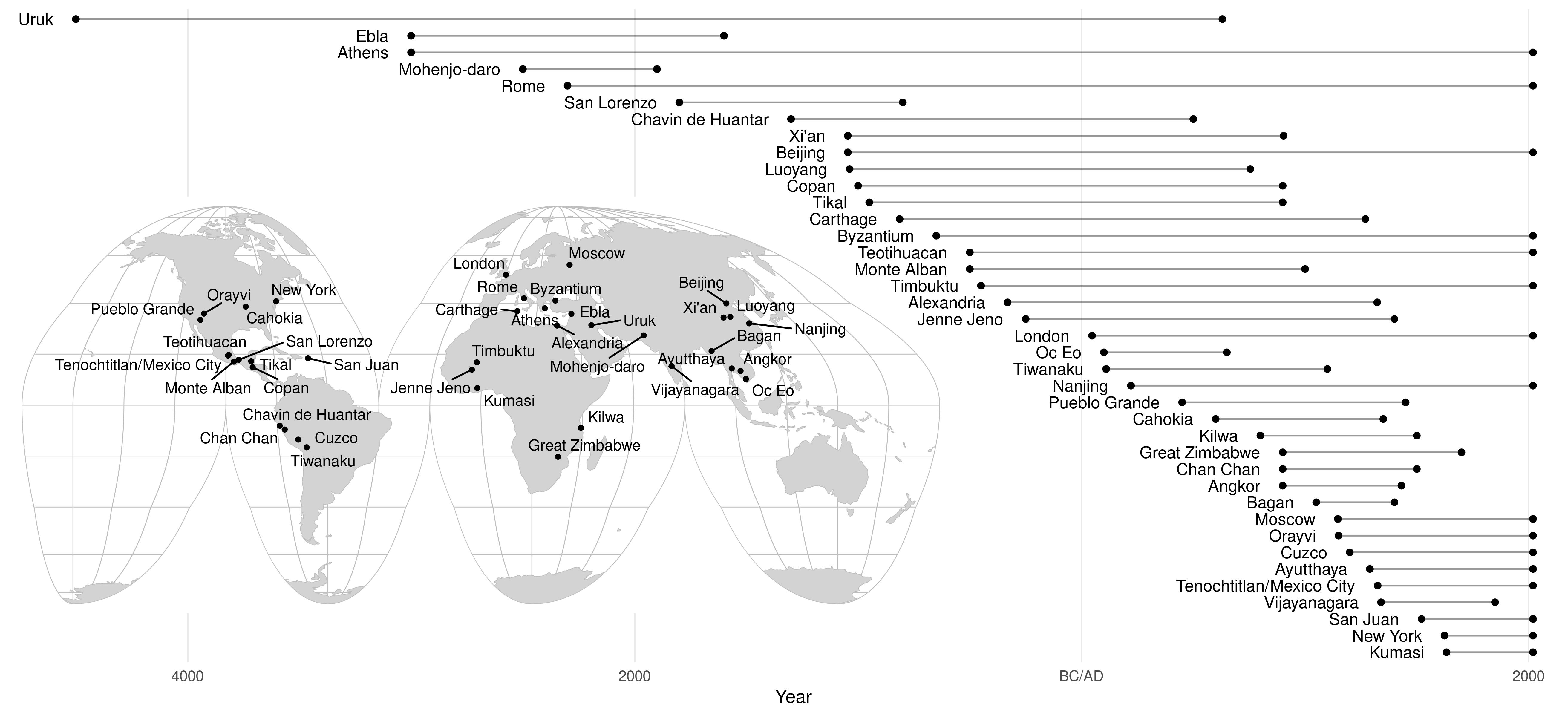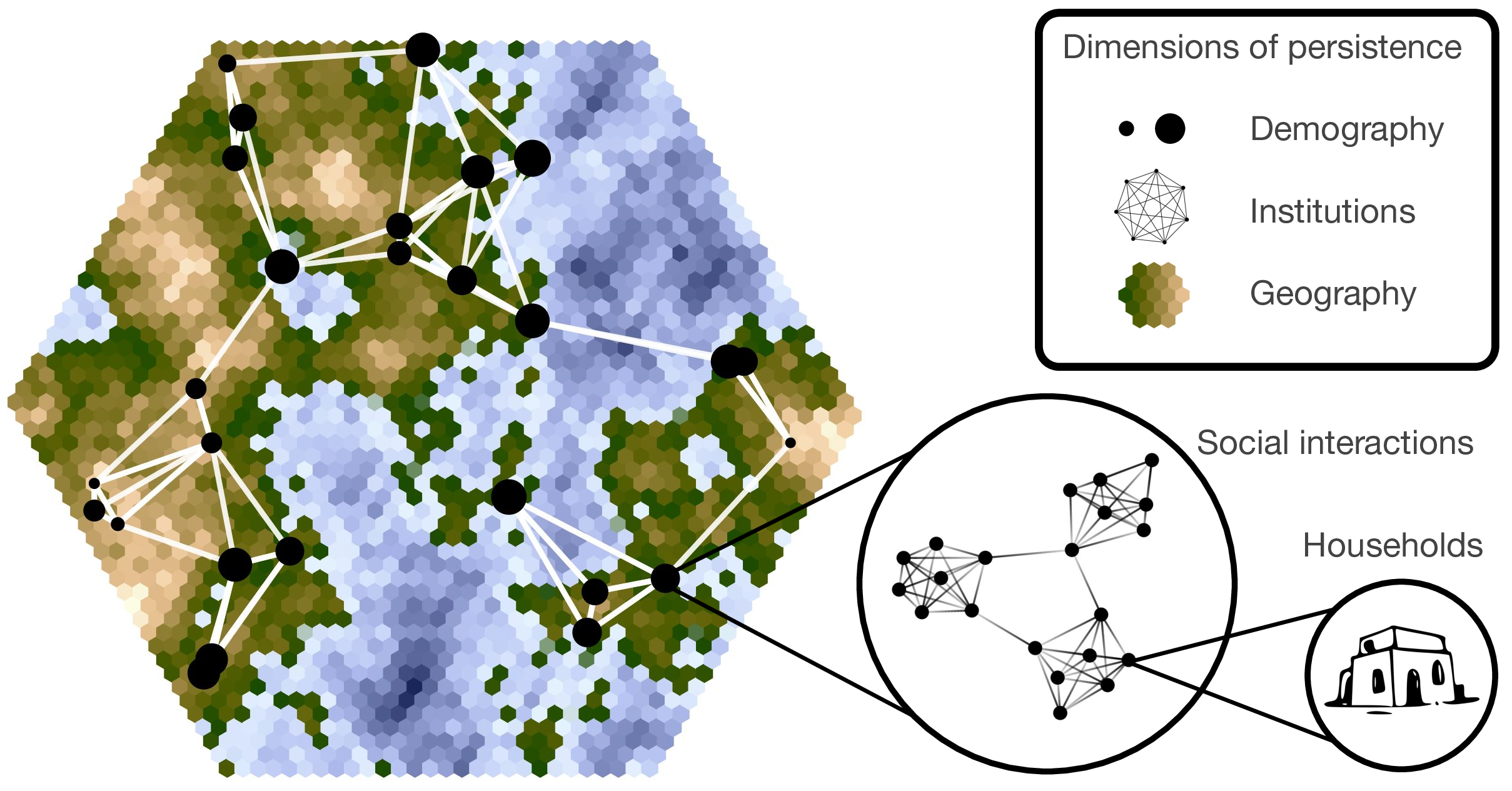Researchers call for new effort to understand ancient cities and sustainability

The modern, industrialized society is not how humans have always lived.
In fact, the last 200 years make up only a tiny portion of human history.
An interdisciplinary team led by Arizona State University researchers is calling for a focused research effort to understand why some human settlements endure the test of time (for thousands of years, in some cases), while others do not.
The researchers published their call this week in the Proceedings of the National Academy of Sciences describing a lack of analysis in this area, called settlement persistence. Settlement refers to any place where humans live and interact — including cities, towns, villages and even hunter-gatherer camps.
The authors pose three possible factors that determine how long a city prospers, including population size, institutions that create cultural norms and physical infrastructure, and the surrounding natural environment.
While much of this raw data exists, the authors call for an in-depth analysis of settlement areas around the world over thousands of years. This is a massive undertaking, as data first needs to be standardized before it can be used for further analysis, like creating models to simulate trajectories of current human settlements.
At first, one may not see the urgency in learning about the dynamics of a long-gone city. The researchers argue that organized, quantifiable data on human settlements throughout deep history and recent history can help us better understand urban sustainability today.

Figure 1 from the paper, showing the length of occupation of some premodern settlements. Ebla and Athens started in a similar physical location at a similar time. So why did Athens endure as Ebla fell? Similarly with Beijing and Xi’an. What made Beijing different from Xi’an? Reprinted with permission from Smith, et al., PNAS doi.org/10.1073/pnas.2018155118 (2021).
What is urban sustainability?
Sustainability generally refers to the ability for something to carry on and continue. In what ways do our modern settlement areas operate sustainably? Are some more sustainable than others?
Cities are typically thought of as massive and strong. Able to support thousands, sometimes millions of people, they are well-developed and established.
However, the ever-changing human landscape is constantly presenting human settlements with new challenges. Perhaps the year 2020 has made many think twice about the stability of the places where we live, work and interact. Will the cities and towns we know today still exist in 100 years? In 1,000 years?
“Fundamentally, sustainability is about humans coexisting in an environment for generations,” said co-author Abigail York, associate professor in the School of Human Evolution and Social Change, who studies environmental social science and urbanization. “Sustainability means that the underlying ecosystem integrity is maintained and people thrive with reduced injustice and inequity. Modern, Western societies (like ours) fail in both dimensions.”
Video by Steve Filmer/ASU Media Relations and Strategic Communications
What do we know so far?
Not only does much of the raw data on past settlement demography, institutions and geography already exist, but there is also anecdotal information that can help set the stage for continued analysis.
Lead co-author and archaeologist Michael E. Smith, a professor in the school, noted some researchers draw similarities between the ancient Maya civilization and many modern societies, though this is not particularly useful from a scientific perspective.
For example, right before the Maya collapse, there was a distinct separation of the Maya elite and the commoners. The elite members of society were not behaving in a way that was sustainable for everybody. Some see a similar situation panning out in modern societies.
“While this does prompt us to think about things, it doesn’t really provide any kind of rigorous, scientific background for comparison,” Smith said. “So, we need to have the kind of quantifiable data that an urban sustainability scientist will be able to understand and use.”
A visualization of the three main determinants of settlement persistence. It’s Figure 4 from the paper. Reprinted with permission from Smith, et al., PNAS doi.org/10.1073/pnas.2018155118 (2021).
The authors note Rome as a well-studied example of settlement persistence and resilience theory.
Two thousand years ago, the city of Rome was a metropolis — thriving with a population of approximately 1 million people. Through political shifts, pandemics and invasions, the population fell to approximately 30,000. But, over hundreds of years, the population grew again and today there are about 3 million people living there.
Resilience theory prompts questions like why do settlement areas “bounce back” after a major disruption like extreme weather or war, while others do not?
A complete picture is needed
The authors, experts in their respective fields of urban sustainability, economics, archaeology, ancient cities and geography, note the importance of this research. They say that many scientists in the field recognize the value of understanding the past, but there aren’t many concerted efforts to organize and analyze the thousands of years of archived data.
The authors say human settlements of today will need to adapt. They’ll need to adjust for climate change. What will coastal cities look like in 50 years? Understanding how humans have responded to climate change events in the past may be a good place to start.
“Ignoring the diversity of human experience and history is a flawed strategy,” York said. “Particularly as it is increasingly clear that the status quo, the dominant modern, Western approach, cannot solve today’s urban sustainability challenges.”
“The Persistence of Ancient Settlements and Urban Sustainability” published in PNAS volume 118 in May 2021. The paper was co-authored by Arizona State University researchers from the School of Human Evolution and Social Change and the School of Sustainability, including Smith, José Lobo, Matthew Peeples, York, Benjamin Stanely, Katherine Crawford and Angela Huster, and University of Arizona researcher Nicolas Gauthier.
More Environment and sustainability

Charles Redman, founder of the School of Sustainability, faces a new adventure: Retirement
At the retirement celebration for Charles Redman on Oct. 22, two messages persisted: Redman’s contributions to Arizona State University helped to shape the interdisciplinary efforts we now find…

10 climate insights to guide our future
A group of globally renowned social, natural and climate scientists has once again convened to offer their newest annual synthesis report, “10 New Insights in Climate Science.”The report, published…

The future is green: Job demand translates to high employability for ASU sustainability grads
A 2023 report by Forbes on the state of green jobs confirmed what Arizona State University has been trumpeting for years: Sustainability will play a large part in the new economy.The report suggests…
